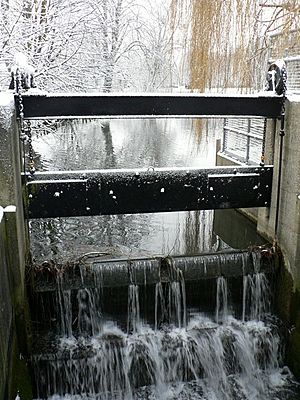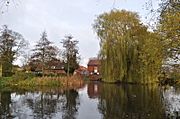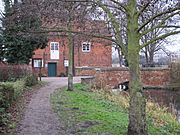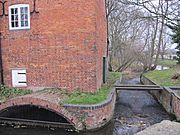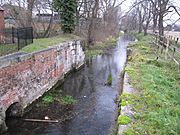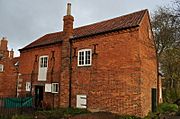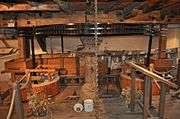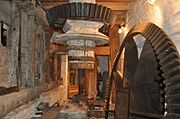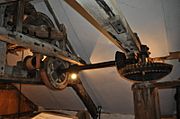Cogglesford Mill facts for kids
Quick facts for kids Cogglesford Mill |
|
|---|---|
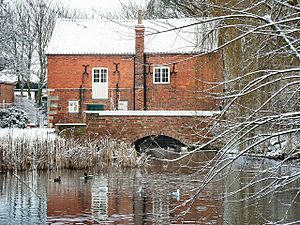
Cogglesford Mill, 2005
|
|
| Type | Watermill |
| Location | Sleaford |
| OS grid reference | TF 07459 46128 |
| Area | Lincolnshire |
| Built | Mid 18th century |
| Owner | North Kesteven District Council |
|
Listed Building – Grade II
|
|
| Official name: Coggesford Mill, mill race and bridge | |
| Designated | 20 July 1973 |
| Reference no. | 1062115 |
| Lua error in Module:Location_map at line 420: attempt to index field 'wikibase' (a nil value). | |
Cogglesford Mill, sometimes called Coggesford, is a historic watermill in Sleaford, Lincolnshire. It is a special building that still works today. The mill grinds stoneground flour which you can buy in its shop. It is thought to be one of the last working "Sheriff's Mills" in England.
Contents
Where to Find Cogglesford Mill
The mill is located just north of Sleaford town. It sits right on the banks of the River Slea. The name "Cogglesford" comes from a ford. A ford is a shallow place where a river can be crossed. This ford was part of an old Roman road called Mareham Lane. The original crossing was a bit further downstream from where the mill is now.
The Mill's Long History
There is proof that a mill has been on this spot for a very long time. Archaeologists have found signs of a Saxon mill here. Records from the Domesday Book also mention mills on this site. The building you see today was built in the mid to late 1700s. It had some changes made to it in the 1800s.
River Slea and Its Mills
Many other mills used to be along the River Slea. In the 1790s, the Sleaford Navigation was built. This was a way to make the river easier for boats. Locks were added at each mill to keep the water at the right level. Locks are like water elevators for boats.
From Locks to Weirs
After the navigation closed, the locks slowly fell apart. They were then replaced with weirs. A weir is a small dam that controls water flow. The weir at Cogglesford Mill is very special. It helps to keep the water level high enough for the mill to keep working.
A Protected Historic Site
Cogglesford Mill is a very important historic place. It was given a special "listed status" on July 20, 1973. This means it is a protected building because of its history. The mill is open to visitors every day during the summer. It's a great place to learn about how mills used to work.
Gallery


